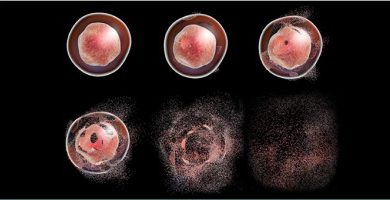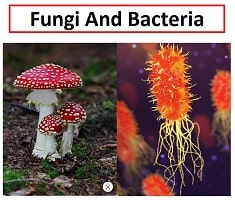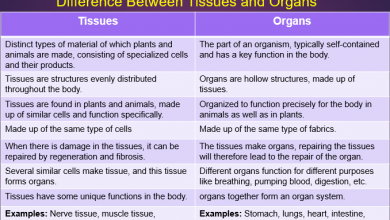fossil | Definition, Types, Examples, & Facts
Fossils are any remains or evidence of an organism that lived a long time ago . The preserved remains of living beings or their traces of the past are documents of the history of life on the planet Earth.
Paleontology is the science that studies and uses fossils to investigate how life on Earth was in the past. All these fossils constitute what is known as the fossil record . This record extends since life appeared on Earth, approximately 3,500 million years ago.
The word “fossil” derives from the Latin fossilis, which means digging up.
Types of fossils
Fossils can be classified according to the size and origin of the preserved material.
Physical fossils or fossil bodies
The remains of the body of a living being, such as bones, shells, teeth, are known as fossil bodies or physical fossils.
Fossil trail
The ichnology studies the fossil footprints. Through the clues and traces you can have direct evidence of the behavior of extinct animals. As well as the size: the largest Tyrannosaurus rex footprint found was 85 cm.
By the tracks it can be said if the dinosaurs walked with their legs open, like a crocodile, or more closed, like a dog. The clues also show us how fast the animals ran, or whether they lived in herds or solitary. The tracks were mineralized during the formation process of the sedimentary rocks.
Within this group of fossils are also the coprolites (fossilized feces), the burrows, the nests, among others.
Macrofossils
They are fossils of visible size, such as bones, shells or petrified wood.
Microfossils
Microfossils are seen under a microscope or with a magnifying glass. They are important to correlate the sedimentary layers when looking for oil and to decipher the ancestral climate of the Earth. Examples of microfossils are diatomaceae, radiolaria and foraminifera.
How are fossils produced?
Transforming the remains of an organism into a fossil after its death takes a great amount of time. The tafonomía is the branch of palaeontology that studies the processes of formation of fossils and fossilization .
There can be three stages in fossilization:
- Putrefaction of the soft tissues of plants or animals.
- Transport and rupture of hard tissues: bones, teeth, shells, wood.
- Burial and modification of hard tissues.
- Mineralization.
- Molds and plasters.
- Replacement.
- Compression.
- Preservation traps
Mineralization
When an organism is buried and its flesh disappears, what remains are the bones or the shell. Some of these parts are porous, and can be filled with water and minerals, which are then transformed into rock. In this way wood and bones are preserved.
Of the most common minerals in this process we have silica and calcite, but also pyrite, phosphate and flint.
Molds and plasters
In some cases, the original bone or shell dissolves or disappears, leaving a free space that is a mold. This mold was then filled with other sediments. Many of the mollusk fossils are formed in this way.
Replacement
Sometimes the chemical composition of a fossil changes due to environmental conditions. For example, in a buried bone your pores are filled with a saline mud and mineralized. Then, what remains of bone is replaced by other different molecules.
This type of fossilization is achieved in some shells of ammonites or other molluscs. The original composition of carbonate is replaced by iron sulfide or pyrite (gold fools), giving the shell the appearance that it is made of gold.
Compression
Some fossils were formed when organisms were compressed by high pressure. Compression is common in leaves and ferns.
Conservation traps
Conservation traps are extraordinary forms of instantaneous preservation. One of these traps is amber, a fossilized tree resin, which when it emanated from the tree caught insects, small animals and plants.
Once paleontologists get a fossil, the process begins to imagine how that being lived, where it lived, how it interacted with other living beings and how it adapted to its physical environment. Organisms can be reconstructed from pieces of fossils.
For example, with a tibia or fibula (leg bone), a few ribs and some vertebrae, the skeleton of Argentinosaurus huinculensis , a gigantosauro discovered in Patagonia, Argentina, was reconstructed . Thanks to this reconstruction and computer simulation it was possible to determine how these great giants moved.
Biostratigraphy
The discovery of fossils in different geological strata allows to characterize the time of the different layers of the lithosphere.
Evolution
Comparing current organisms with fossil records can determine how species have evolved.
DNA of fossils
With the novel by Michael Crichton and then the series of films “Jurassic Park”, the possibility of using fossil DNA to recreate the living organisms of prehistory entered into the imagination of the public.
The first genome of a prehistoric species was analyzed in 2008. From a mammoth preserved in the permafrost of Siberia, a sample of hairs was obtained with which the DNA could be analyzed. This experience gave rise to paleogenomics , the study of the genome of extinct ancestral species.
How are fossils collected?
Sometimes you can find well preserved fossils of good size, so you only need to collect them. These can be on the surface due to erosive processes or can be excavated in archaeological expeditions.
On other occasions, more work and preparation is required. The fossil footprints can not be removed; instead, reproductions or copies are made in the field.
Microfossils are difficult to manipulate because of their tiny size. They are frequently found in sand or granulated sedimentary rocks.
Examples of fossils
Of all the biodiverity that has existed on Earth, paleontologists have identified at least 150 thousand species by means of fossils. Let’s see some cases.
Luzia is the name given to the woman to whom she belonged parts of a fossilized skeleton found in Brazil. This woman lived in over 10,000 years ago and died around the age of twenty.
Triceratops
The Triceratops is a genus of herbivorous cetaceous dinosaur (that shows horns) that lived in the Cretaceous period. The skull measures approximately 2.65 mt, being one of the longest so far found. Weighed between 6 to 9 tons.
Archeopteryx lithographica
Archeopteryx lithographica is the oldest ancestral discovered fossil, approximately 150 million years old.
Priscacara liops
Fish are the most primitive vertebrate animals. Priscacara liops was a perch of the Eocene period.
Gondwanagaricites magnificus
The fungus Gondwanagaricites magnificus was discovered in Brazil in 2017. Its preservation is remarkable for being the first mineralized fossil fungus, unlike other fungi that have been found preserved in amber.
Diploria strigosa
Corals are marine invertebrate animals, characterized by a hard structure like exoskeleton. Coral fossils are common due to this exoskeleton since the seabed was conducive to its formation.
Trilobites Ellipsocephalus hoffii
Probably the trilobites are the most famous fossilized animals . More than 10,000 species have been identified, all marine. The Ellipsocephalus hoffii lived during the Cambrian period.
False fossils or pseudofossils
There are formations that can sometimes be confused by fossils. For example, manganese oxides can grow inside rocks and look like ferns trapped in it. This is known as manganese dendrites and they are not fossils.




